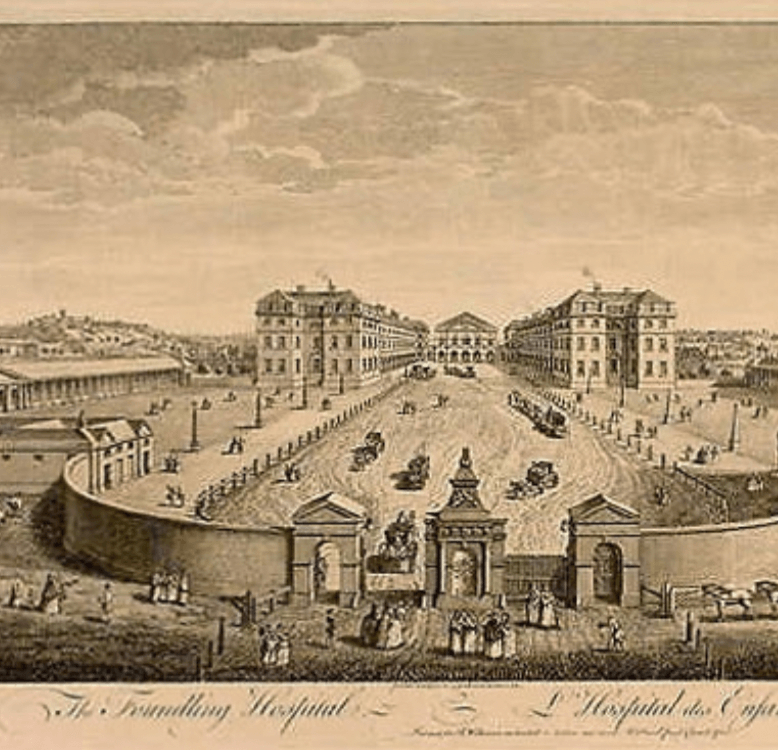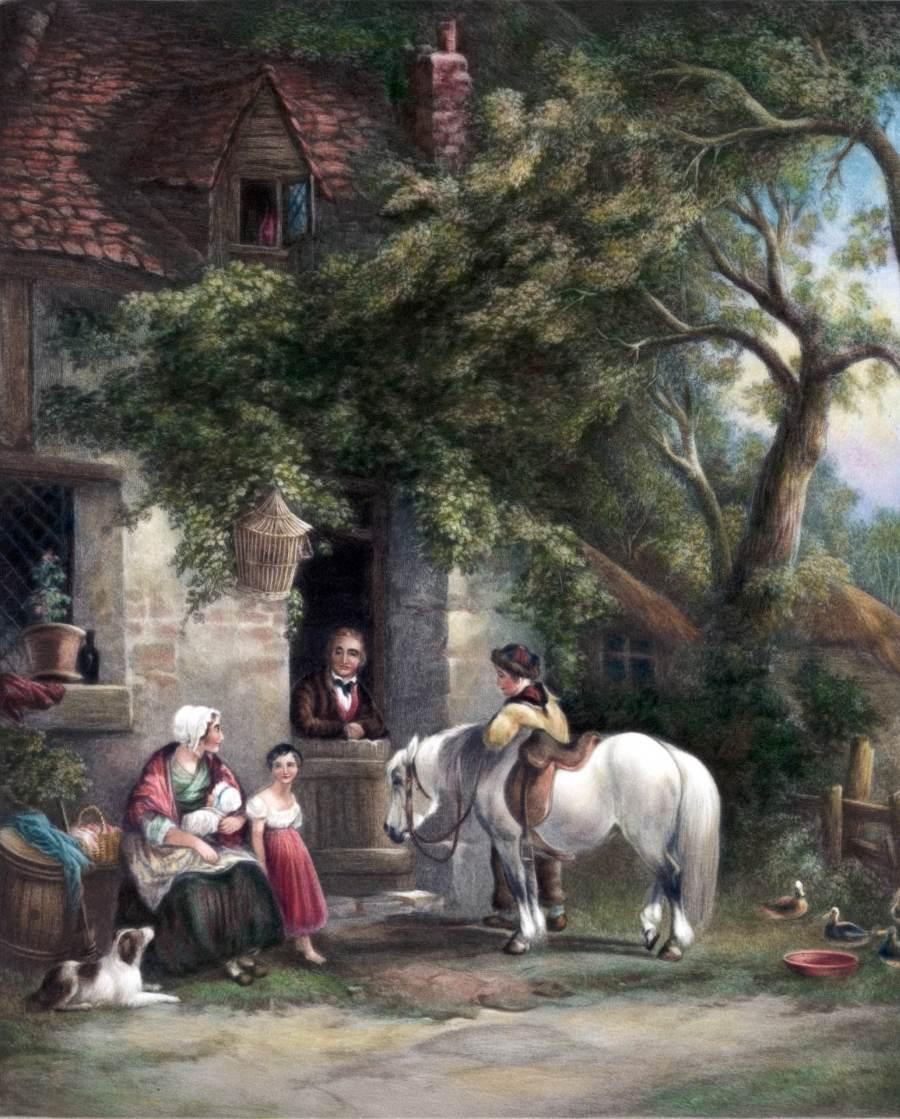The Regency Wedding Breakfast
During the Regency, weddings were often held first thing in the morning with the bridal couple and their guests returning home to celebrate with a wedding breakfast, a precursor to the modern wedding reception, before departing to their new home, or perhaps on their honeymoon.

Jane Austen's niece Caroline (daughter of James) gave a wonderful description of her sister Anna's wedding to family friend Benjamin Lefroy on November 8, 1814:
"My sister’s wedding was certainly in the extreme of quietness… The season of the year, the unfrequented road to the church, the grey light within… no stove to give warmth, no flowers to give colour and brightness, no friends, high or low, to offer their good wishes, and so to claim some interest in the great event of the day – all these circumstances and deficiencies must, I think, have given a gloomy air to the wedding…Weddings were then usually very quiet. The old fashion of festivity and publicity had quite gone by, and was universally condemned as showing the bad taste of all former generations.... This was the order of the day. The bridegroom came from Ashe, where he had hitherto lived with his brother (the Rector), and with him came Mr. and Mrs. Lefroy, and his other brother, Mr. Edward Lefroy.... My brother came from Winchester that morning, but was to stay only a few hours. We in the house had a slight early breakfast upstairs, and between nine and ten the bride, my mother, Mrs. Lefroy, Anne, and myself were taken to church in our carriage. All the gentlemen walked." She continues: "Mr. Lefroy read the service, and my father gave his daughter away. No one was in the church but ourselves, and no one was asked to the breakfast, to which we sat down as soon as we got back...The breakfast was such as best breakfasts then were. Some variety of bread, hot rolls, buttered toast, tongue, ham and eggs. The addition of chocolate at one end of the table and the wedding-cake in the middle marked the speciality of the day...soon after the breakfast the bride and bridegroom departed. They had a long day's journey before them to Hendon.... In the evening the servants had cake and wine."It should be noted, however, that Caroline was writing in later years. There is some disagreement in how early the term actually came to be applied to what was, in earlier times, thought of as a "wedding feast". Although it is not specifically mentioned in Jane Austen's novels, based on Caroline's descriptions, I personally think it was an accepted term in her day. The first recorded mention of a wedding breakfast in print is in the London Times on January 15, 1838, when a book reviewer quotes from The Veteran, by John Harley, 'C--- and his bride returned to the coffee house, where they were received with great kindness the master and mistress who, notwithstanding the short notice, had a comfortable wedding-breakfast prepared for them'. The implication here is, of course, that by 1838, it was a recognized habit of weddings. In Party-giving on Every Scale (London, 1880) the term is given the respect of tradition,
The orthodox "Wedding Breakfast" might more properly be termed a "Wedding Luncheon," as it assumes the character of that meal to a great extent; in any case it bears little relation to the breakfast of that day, although the title of breakfast is still applied to it, out of compliment to tradition. As recently as fifty years ago luncheon was not a recognized meal, even in the wealthiest families, and the marriage feast was modernized into the wedding breakfast, which appellation this entertainment still bears.The important pieces, a gathering of family to celebrate the bridal couple, and cake, remain to this day. In addition to sharing this cake with members of the wedding party, families often sent pieces to friends as a gesture of good will and celebration. Jane mentions this sending about of cake in her letters to Cassandra. In the following note, Jane is referring to Catherine Bigg, sister to Harris Bigg-Wither, who was once an accepted suitor of Jane's. Catherine, at 33, had just married Rev. Herbert Hill, aged nearly 60, a match Jane seems not to have favored (calling her "poor Catherine" in her letters). The mentioned Martha is, no doubt, Jane's dear friend Martha Lloyd. “Do you recollect whether the Manydown family sent about their wedding cake? Mrs. Dundas has set her heart upon having a piece from her friend Catherine, and Martha, who knows what importance she attaches to this sort of thing, is anxious for the sake of both that there should not be a disappointment.” Jane Austen to Cassandra October 13, 1808
 Elizabeth Raffald's recipe and a modern interpretation can be found in Cooking with Jane Austen and Friends, Early wedding cakes were similar to Christmas fruit cakes-- heavy, dense with dried fruit, and able to be stored for months and even years to come. The modern practice of saving the top tier of the wedding cake to be eaten on the couple's first anniversary is taken from the historic practice of saving some cake to be served at the christening of the couple's first child (an event which often followed in the first year of marriage). Elizabeth Raffald's 1794 Experienced English Housekeeper was the first cookery book to publish a recipe for cakes specifically for weddings.
Elizabeth Raffald's recipe and a modern interpretation can be found in Cooking with Jane Austen and Friends, Early wedding cakes were similar to Christmas fruit cakes-- heavy, dense with dried fruit, and able to be stored for months and even years to come. The modern practice of saving the top tier of the wedding cake to be eaten on the couple's first anniversary is taken from the historic practice of saving some cake to be served at the christening of the couple's first child (an event which often followed in the first year of marriage). Elizabeth Raffald's 1794 Experienced English Housekeeper was the first cookery book to publish a recipe for cakes specifically for weddings.
Laura Boyle is fascinated by all aspects of Jane Austen’s life. She is the proprietor of Austenation: Regency Accessories, creating custom hats, bonnets, reticules and more for customers around the globe. Cooking with Jane Austen and Friends is her first book. Her greatest joy is the time she is able to spend in her home with her family (1 amazing husband, 4 adorable children and a very strange dog.)
If you don't want to miss a beat when it comes to Jane Austen, make sure you are signed up to the Jane Austen newsletter for exclusive updates and discounts from our Online Gift Shop.



1 comment
Bonjour, Hello,
pouvez-vous me dire qui est le peintre svp de la scène du petit déjeuner de mariage Regency ?
Hello could you telle me who is the painter of the scene you called " Regency’s wedding breakfast" please ? I need it for my school. Thank you !
“https://cdn.shopify.com/s/files/1/0308/7889/2172/t/15/assets/description_image_goodcompany.jpg?v=1595764958
de moya Aurélie
Leave a comment
This site is protected by hCaptcha and the hCaptcha Privacy Policy and Terms of Service apply.